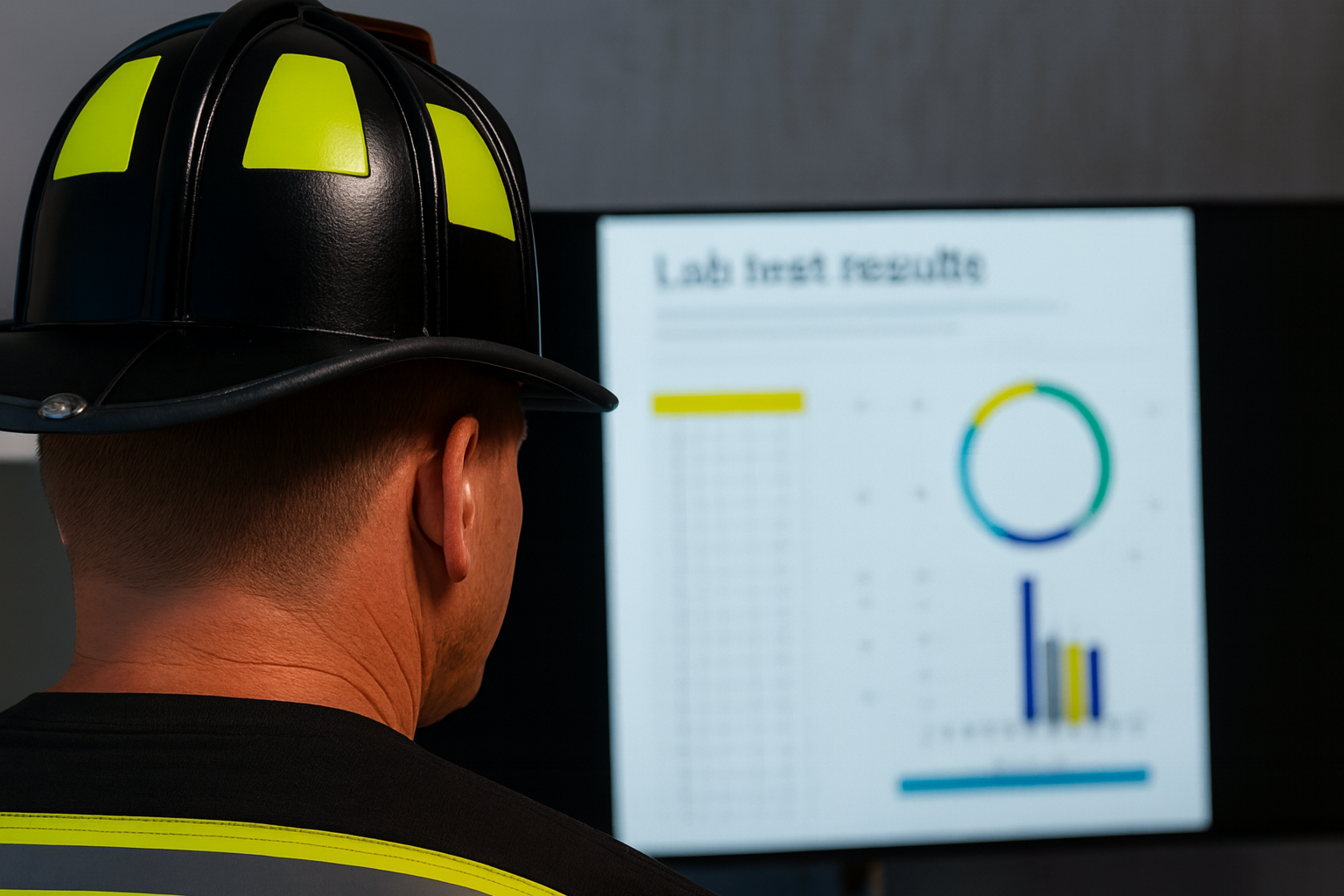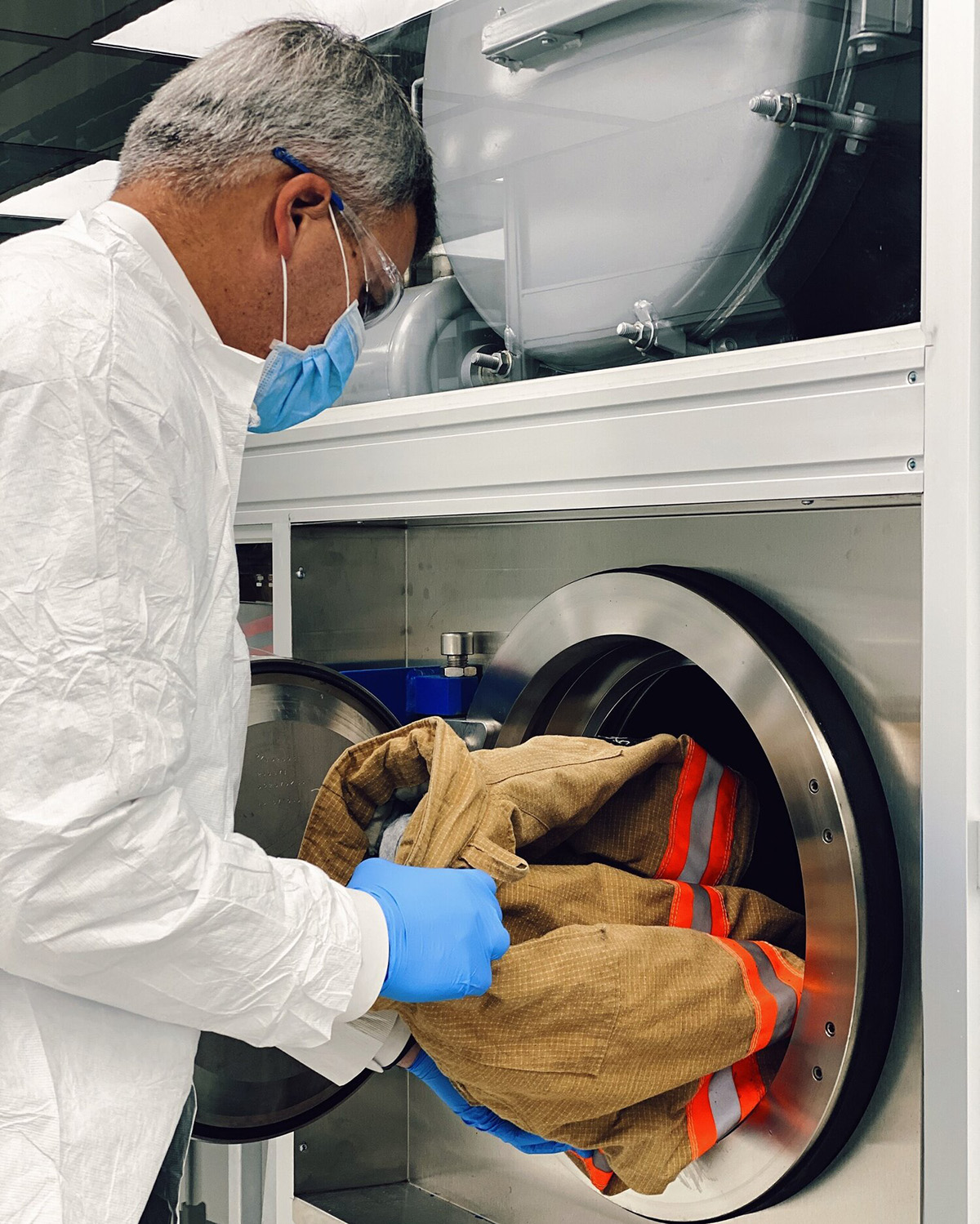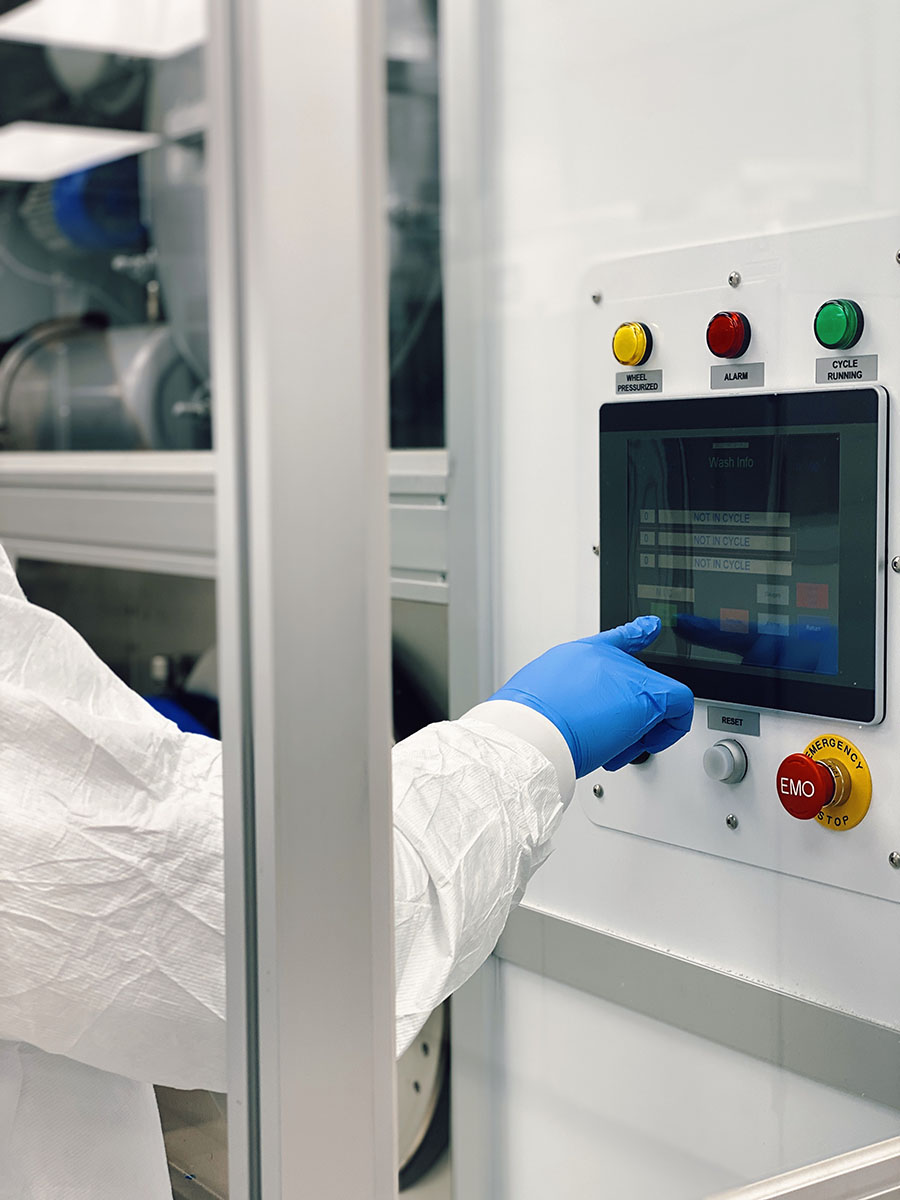By: Emergency Technical Decon Team
The presence of PFAS (per- and polyfluoroalkyl substances) in firefighter turnout gear continues to raise serious health and safety concerns across the fire service. As awareness and concern grow, more departments are turning to laboratory testing to better understand the contamination levels in their gear. But once you receive those results, what do they mean?
Why Test for PFAS in Turnout Gear?
PFAS are known as “forever chemicals” because they don’t naturally break down in the environment or the human body. Exposure to these substances is linked to increased cancer risk, among other serious health issues. Because turnout gear may be treated with PFAS-based water repellents or contaminated in the field, understanding PFAS levels is critical to firefighter safety.
Why PFAS Testing Matters
Turnout gear may arrive with PFAS-based water-repellent treatments, and during fire response, it can collect even more harmful chemicals and toxins. Testing allows you to:
- Identify levels of PFAS already in your gear.
- Compare results to baseline levels from the new gear.
- Make informed decisions about decontamination, replacement, and long-term safety.
Lab results can feel overwhelming, filled with acronyms and numbers. Focus on these key points:
- Total PFAS vs. Specific Compounds: Look for overall PFAS concentration and identify problem chemicals like PFOA or PFOS.
- Concentration Levels: While there aren’t federal limits for turnout gear yet, anything above 10–20 parts per trillion (ppt) may require action.
- Comparisons Over Time: Re-test regularly to track how much contamination builds up as gear is used.
Liquid CO2+ cleaning works differently:
- No added water or heat.
- A low-speed, closed-loop system that safely penetrates all gear layers.
- Gear comes out fully dry after a single cycle.
- Proven to remove up to 84% of PFAS while extending the life of turnout gear.
In short, with Liquid CO2+, firefighters don’t have to choose between safety and gear longevity — you get both.
What to Do After Testing
Once you have your results, you can:
- Flag highly contaminated gear for immediate cleaning or replacement.
- Create a regular testing schedule to track buildup over time.
- Use data to support grant applications or justify budget needs for better cleaning solutions.
Empowering Safer Decisions
By understanding and acting on PFAS lab data, departments can take critical steps toward reducing firefighter exposure risks and extending the life of their protective gear. Testing isn’t just about compliance—it’s a cornerstone of a safer culture.
Need help interpreting results or scheduling PFAS decon? Request Service from ETD.



